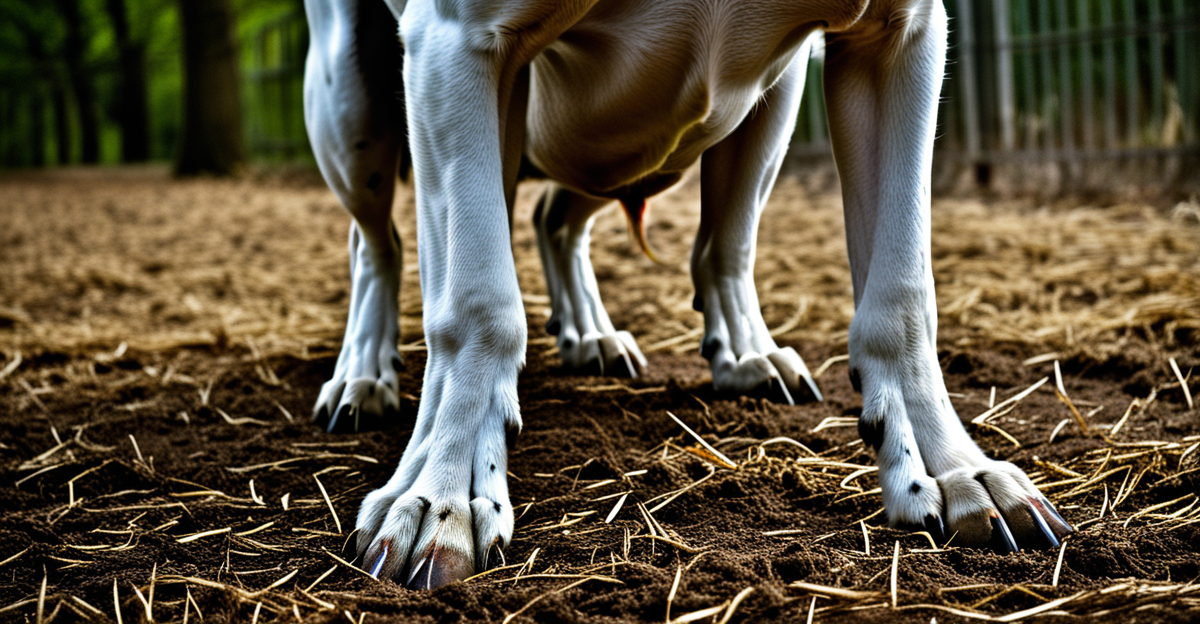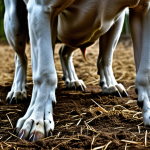Recognising Early Signs of Bloat in Great Danes
When monitoring Great Dane health, identifying early bloat symptoms can be critical to preventing a life-threatening situation. The earliest GDV warning signs often appear as subtle behavioural changes. Owners may notice restlessness, pacing, or unusual drooling, which signals discomfort long before physical symptoms arise.
Physical indicators include a noticeably distended abdomen—the stomach expands, creating an unnatural bloated appearance. Your dog might also make unsuccessful attempts to vomit, which is a strong warning sign. Accompanying these signs, breathing difficulties may develop due to pressure on the diaphragm, and the dog might express pain through whining or a hunched posture.
A lire en complément : The Definitive Resource for Choosing the Perfect Training Collar for Your Tenacious Akita
Recognising these early bloat symptoms provides a vital window to act swiftly. Delays can rapidly escalate bloat into GDV, causing the stomach to twist and cutting off blood supply. Since Great Danes are predisposed to this condition, vigilance is essential. Learn to observe your dog’s behaviour closely and respond promptly at the first hint of discomfort or abnormal physical signs. The combination of behavioural and physical clues is the foundation of early bloat detection.
Recognising Early Signs of Bloat in Great Danes
Identifying early bloat symptoms in your Great Dane can be lifesaving. Owners should watch for subtle behavioural changes, such as restlessness, pacing, and unusual drooling. These initial signs may seem mild but often signal the onset of GDV.
Avez-vous vu cela : Revealing Boxer Health Risks: Proven Prevention and Care Strategies
Physically, a distended abdomen is a clear warning sign that should not be ignored. Additionally, if your dog makes unsuccessful attempts to vomit, this indicates discomfort and possible gastric torsion. These GDV warning signs are critical for prompt recognition.
Keep an eye on your Great Dane’s breathing. Breathing difficulties and signs of acute pain, like whining, pacing, or reluctance to move, are urgent indicators of a worsening condition. Because GDV develops rapidly, recognizing these symptoms early is essential for Great Dane health and survival.
Monitoring your dog closely and responding quickly to these early signs often means the difference between life and death. The sooner you notice early bloat symptoms and GDV warning signs, the faster you can seek emergency care, improving the outcome dramatically.
Understanding Bloat (Gastric Dilatation-Volvulus)
Bloat, medically termed gastric dilatation-volvulus (GDV), is a severe, life-threatening condition where a dog’s stomach fills with gas and twists on itself. This twist cuts off blood flow, causing rapid deterioration. For GDV in Great Danes, the risks are especially high due to their large, deep chests, which make them more prone to canine gastric torsion.
So, what is bloat exactly? Bloat starts with the stomach expanding as gas accumulates, causing discomfort and visible swelling. Without prompt action, the stomach can rotate, blocking both the entrance and exit, trapping gas and fluid inside. This rotation compresses vital blood vessels, reducing circulation to important organs.
Because bloat progresses very quickly, symptoms like early bloat symptoms and GDV warning signs can evolve in minutes. Understanding that GDV is not just a swollen belly but a rapidly lethal crisis is crucial for anyone concerned about Great Dane health. Awareness helps owners respond swiftly, preventing the dire consequences of untreated bloat.
Understanding Bloat (Gastric Dilatation-Volvulus)
Bloat, medically termed Gastric Dilatation-Volvulus (GDV), is a severe canine condition where the stomach fills with gas and twists, cutting off blood flow. For Great Danes, this is particularly dangerous due to their large chest cavity and deep body anatomy. Understanding what is bloat is crucial because the stomach can expand rapidly, causing pressure on vital organs and leading to shock or death without immediate treatment.
Why are Great Danes prone to GDV? Their unique physiology and genetics elevate the risk. Their deep chest structure allows for stomach rotation more easily than in other breeds. This makes early detection and intervention critical. Once bloat sets in, it can progress within minutes to life-threatening gastric torsion.
Canine gastric torsion complicates bloat by twisting the stomach, which traps gases and restricts blood circulation. This leads to tissue death and systemic shock. The rapid escalation of GDV emphasizes urgency—delaying veterinary care can drastically reduce survival chances. Recognising GDV in Great Danes and understanding why it develops helps owners respond effectively to protect their pet’s Great Dane health.
Recognising Early Signs of Bloat in Great Danes
Recognising early bloat symptoms is vital for maintaining Great Dane health and preventing a rapidly fatal outcome. Bloat often begins with subtle behavioural changes. Owners may observe restlessness, pacing, or unusual drooling, which are among the earliest GDV warning signs. These may be overlooked as mere discomfort but indicate escalating gastric distress.
Physically, a distended abdomen is a hallmark symptom. The swelling usually appears sudden and firm, reflecting gas accumulation. Your Great Dane might also show unsuccessful attempts to vomit or gag without bringing anything up—another key GDV warning sign signalling possible gastric torsion.
Watch closely for signs of breathing difficulties. Laboured breathing or rapid shallow breaths occur as the enlarged stomach presses against the diaphragm. Dogs might also express pain through whining, reluctance to move, or adopting a hunched posture. These signs mean the condition is worsening quickly.
Understanding these combined behavioural and physical clues empowers owners to act immediately. Ignoring or missing early bloat symptoms can allow the situation to progress into full GDV in Great Danes, greatly increasing the risk of fatality without urgent veterinary intervention.
Recognising Early Signs of Bloat in Great Danes
Early detection of early bloat symptoms is vital for preserving your Great Dane’s health. Subtle behavioural changes often precede more obvious symptoms. Look for restlessness, pacing, or unusual drooling—these may seem minor but are key GDV warning signs indicating your dog is uncomfortable or in distress.
Physically, a distended abdomen is an unmistakable sign of bloat. Pay special attention if your Great Dane makes unsuccessful attempts to vomit, as this suggests gastric discomfort or potential twisting of the stomach. Inability to expel contents is a serious symptom that requires immediate attention.
Breathing difficulties often accompany these signs. A dog struggling to breathe or showing signs of pain, such as whining, reluctance to move, or hunched posture, signals escalating severity. These symptoms reflect pressure on the diaphragm and the acute pain caused by gastric torsion.
Applying knowledge of these early bloat symptoms can make the difference between timely veterinary intervention and a critical emergency, underscoring the importance of close observation to protect your Great Dane’s health.
Recognising Early Signs of Bloat in Great Danes
Detecting early bloat symptoms in your Great Dane hinges on observing subtle behavioural cues. Restlessness and pacing often signal discomfort before physical symptoms emerge. Unusual drooling, not linked to food, is another early indicator suggesting gastric distress. These behavioural shifts serve as vital GDV warning signs that owners must not overlook.
Physically, a distended abdomen is one of the clearest signs your dog might be experiencing bloat. This swelling feels firm and may develop quickly as gas accumulates. Another critical sign is your dog making unsuccessful attempts to vomit or gag without producing any vomit, hinting at the stomach twisting and obstructing passages.
Breathing difficulties should raise immediate concern. As the stomach inflates, it presses on the diaphragm, causing rapid, shallow breaths or laboured breathing. Dogs may also show acute pain through whining, reluctance to move, or adopting a hunched posture, further reinforcing the presence of serious GDV warning signs.
For maintaining optimal Great Dane health, recognising these early bloat symptoms can make the difference between timely emergency care and a fatal outcome. Watch behaviour and physical signs carefully—early detection saves lives.
Recognising Early Signs of Bloat in Great Danes
Early detection of early bloat symptoms in your Great Dane is crucial for protecting their health and preventing severe outcomes. Subtle behavioural changes often serve as the first GDV warning signs. These include restlessness, pacing, and unusual drooling, which may be easily mistaken for minor discomfort but actually indicate mounting gastric distress.
Visible physical symptoms typically follow. A distended abdomen is a prominent indicator of bloat, marked by rapid swelling and firmness due to gas buildup. Additionally, unsuccessful attempts to vomit, where the dog gags without producing anything, strongly suggest stomach distress or twisting.
Breathing difficulties are another critical sign. As the stomach enlarges, it presses against the diaphragm, causing laboured or rapid shallow breathing. Dogs may express significant pain through whining, reluctance to move, or a hunched posture. These signs reflect serious distress that demands immediate action.
By recognising these behavioural and physical clues, owners can act swiftly to preserve Great Dane health before bloat progresses into full gastric torsion or life-threatening GDV. Early, precise identification of these early bloat symptoms significantly improves survival chances.











